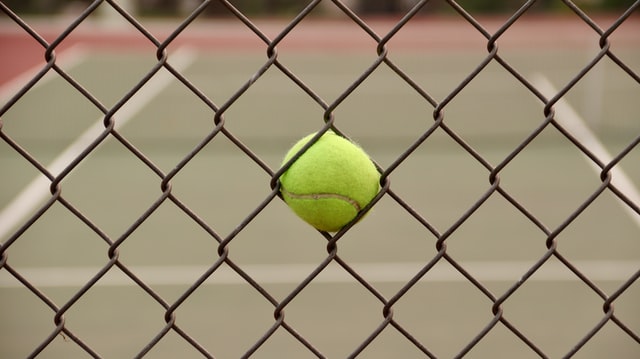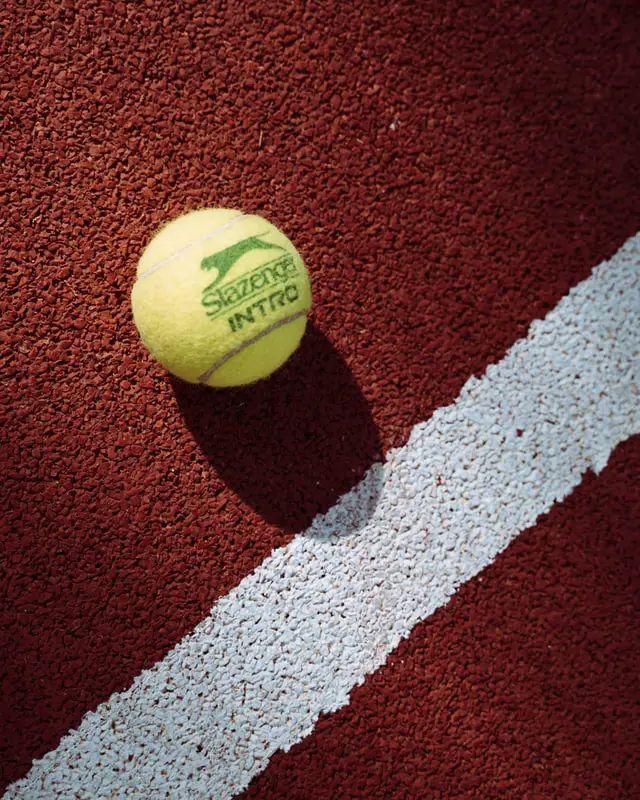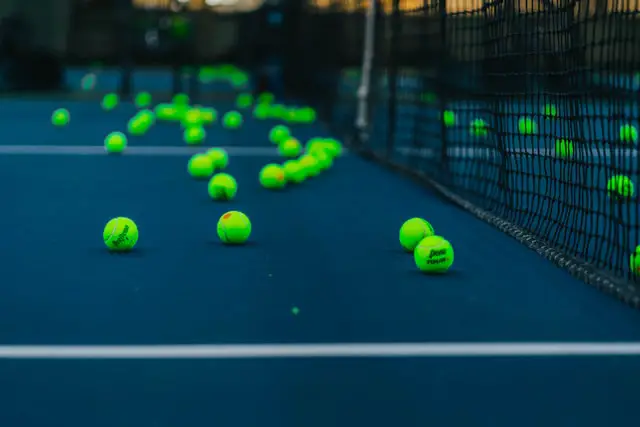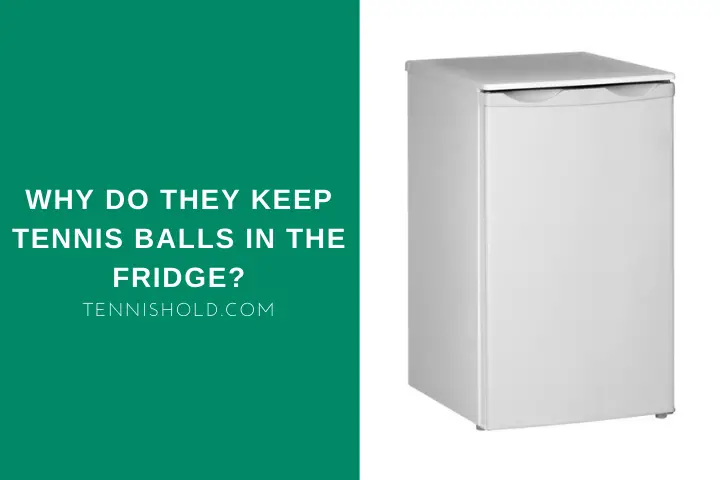Have you ever paid attention to the surroundings of players’ benches and the umpire’s chair? If you haven’t, you missed a lot of fun facts.
It’s a diverse set of devices and amenities. For example, there are some cameras around, ball boy stands, garbage bins, snack, and beverage refrigerators, tennis balls depots, etc.
I would stop here and focus on the fridges. What they are used for will blow you over. Imagine you want to grab a bottle of isotonic drink, and you get a can of balls.
Strange enough?
No, not at all. Cooling down tennis balls in a fridge is a common practice.
The right temperature is crucial for the right tennis ball pressure. Keeping tennis balls in the constant temperature fridge during the tournaments decreases their internal air outflow. Because of this, balls do not lose pressure as fast and perform better on the court.
As you know, every time a tennis ball can is opened, the balls start to become flatter and flatter and lose their properties.
To delay this process, you may want to use the fridge.
It’s All About Internal Ball Pressure

Let’s be honest, you want to play with quality tennis balls all the time. But even tournament players don’t realize how vital the proper storage is.
Know-how can help you enjoy hitting with the same balls for a much longer time.
A new can-pressurized tennis ball has an internal pressure of 14psi. Any deviation from this norm affects the ball’s performance.
This is the last thing you need.
If you don’t know how it all works, you should look deeper into the ball structure, in which a yellow felt covers a rubber core.
Basically, the core is filled with air, and the inner pressure determines the shape and height of the tennis ball bounce.
Lower pressure results in lower bounce, but the ball can be dramatically faster and elastic with increased pressure.
Let me explain a little bit of science to make it easy to understand.
The gas pressure value (p) is a product of density (r), constant specific to the gas (P) and temperature (T). So, if r and P remain the same, the temperature is what, in reality, influences tennis ball performance.
When the temperature goes down, the molecules slow down and compress. So if you hit such a ball, there will be literally no reaction.
Inversely, when the temperature goes up, the molecules expand and increase their kinetic energy. So the ball becomes ‘full of energy and acts like a bullet.
As you see, keeping particular pressure inside tennis balls is reasonable. You want balls to be highly playable and predictable.
Effectively, low temperature prevents air from leaking as the motion of the molecules is reduced.
This helps to keep more air inside and as you know, the more air you have inside the ball, the longer it will bounce.
Do Refrigerated Tennis Balls Bounce Better?

Tennis is played around the entire world, sometimes in the most extreme weather conditions. Just like you can suffer from overheating or cold, so can the balls.
The ball bounces higher and livelier when it’s warmer. Tennis ball behavior depends on its internal air pressure, so you want to have it under control. You can achieve this by influencing its temperature.
The research from Ohio State University shows a clear relationship between temperature and pressure.
You can expect full tennis ball potential at 68 degrees Fahrenheit, which might be called room temperature too.
Meanwhile, if you drop a hot 100-degree F tennis ball, it will bounce 16.5% higher. On the other hand, if you drop a cold 28-degree F tennis ball, it will bounce as much as 79% lower than a room-temperature ball.
Ball refrigerating might look to affect tennis ball quality, but in fact, it preserves it. And this technique has been used for decades.
Once taken out of the fridge, a ball warms up, and the inside air expands to its original volume.
Then you notice a difference on the contact with the racket. The ball compression decreases and, in turn, makes shots more dynamic and dangerous for opponents.
The game turns into a very spectacular event.
Maybe from now on, instead of bottles you will be storing balls in your cooler.
What Temperature Should Be Balls Kept At?

As I mentioned before, the optimal temperature for tennis ball performance is around 68 degrees Fahrenheit.
It’s way hotter in places like Australia or Central America, so the balls there behave differently. But in a moderate climate, like central Europe, you can find the best conditions to play.
Steady mild weather provides the most balanced and comfortable bounce parameters. The ball’s trajectory and speed credibly reflect the player’s technique and racket momentum.
Honestly, I don’t think that many tournaments have resources and conditions to keep tennis balls at a specific temperature. However, my coaching experience shows that the balls you use are as cool or warm as the place you train or compete at.
The most prestigious tournaments should be financially able to take care of it. But is it really worth it?
Why would you even think of investing in tennis balls fridges if you use each ball for 9 games only?
For example, Wimbledon is known for keeping its tennis balls constantly at 68 degrees Fahrenheit.
But this special case is even more complex since the courts are grassy. Without the highest-quality balls, you wouldn’t watch a spectacular show.
Grass courts create very low, deep, and long bounces compared to other surfaces. Yet when combined with unusual ball acceleration, it’s one of the toughest bounces to return.
Similar problems occur at tournaments held at high altitudes. Again, this is where controlling the ball’s temperature would be very helpful.
Due to lower atmospheric pressure and air density, the regular ball bounces much higher and springs off the racket faster.
So, keeping them in a fridge could be a good solution. Otherwise, the game really goes crazy.
Alternatively, you can just buy a can of special high-altitude tennis balls.
Final Words
Refrigerating tennis balls is something out of the ordinary. But still, it really takes place in professional tennis. Just don’t expect it to become common one day.
The bottom line is that keeping fridges is not financially viable for small local tennis clubs.
Amateur players perhaps wouldn’t see that big difference between refrigerated and a regular ball. At the highest level of competition, though, this factor can decide about the win or loss.
Colder weather means lower and shorter ball strokes from inside of the court. A hotter climate will push you far behind the baseline if you don’t have enough skills to hit rising balls aggressively.
Think about hitting Dubai in July when temperatures rise up to 105 degrees Fahrenheit. No chance for any success against a guy with excellent deep topspin.
Anyway, try to put balls into your fridge once or twice before playing. This experience will be unforgettable and fun.
Why do you think tennis balls cooling isn’t so common yet?

